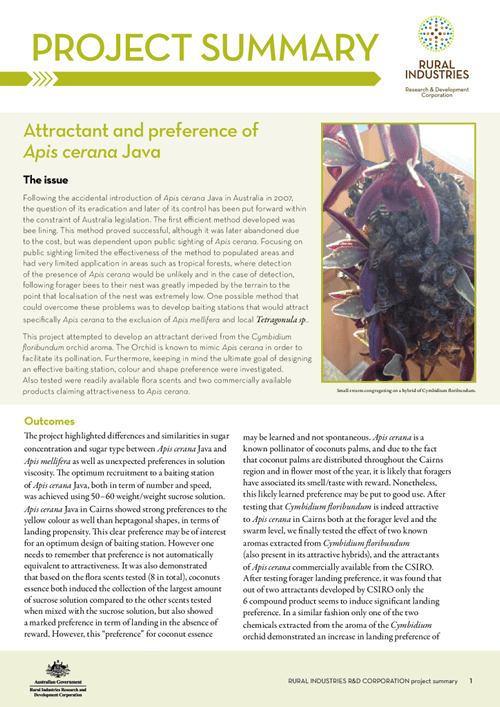Value of honey bee pollination to the Australian economy
Since the mid-1980s, economists have made numerous attempts at estimating the value of honey bee pollination to the Australian economy. The exercise is not straightforward,...
 HONEY BEE & POLLINATION
HONEY BEE & POLLINATION 
Published: 17 Aug 2015
Author(s): Guez, Dr David
Download report PDF
DownloadFollowing the accidental introduction of Apis cerana Java in Australia in 2007, the question of its eradication and later of its control has been put forward within the constraint of Australia legislation. The first efficient method developed was bee lining. This method proved successful, although it was later abandoned due to the cost, but was dependent upon public sighting of Apis cerana. Focusing on public sighting limited the effectiveness of the method to populated areas and had very limited application in areas such as tropical forests, where detection of the presence of Apis cerana would be unlikely and in the case of detection, following forager bees to their nest was greatly impeded by the terrain to the point that localisation of the nest was extremely low. One possible method that could overcome these problems was to develop baiting stations that would attract specifically Apis cerana to the exclusion of Apis mellifera and local Tetragonula sp..
This project attempted to develop an attractant derived from the Cymbidium floribundum orchid aroma. The Orchid is known to mimic Apis cerana in order to facilitate its pollination. Furthermore, keeping in mind the ultimate goal of designing an effective baiting station, colour and shape preference were investigated. Also tested were readily available flora scents and two commercially available products claiming attractiveness to Apis cerana.